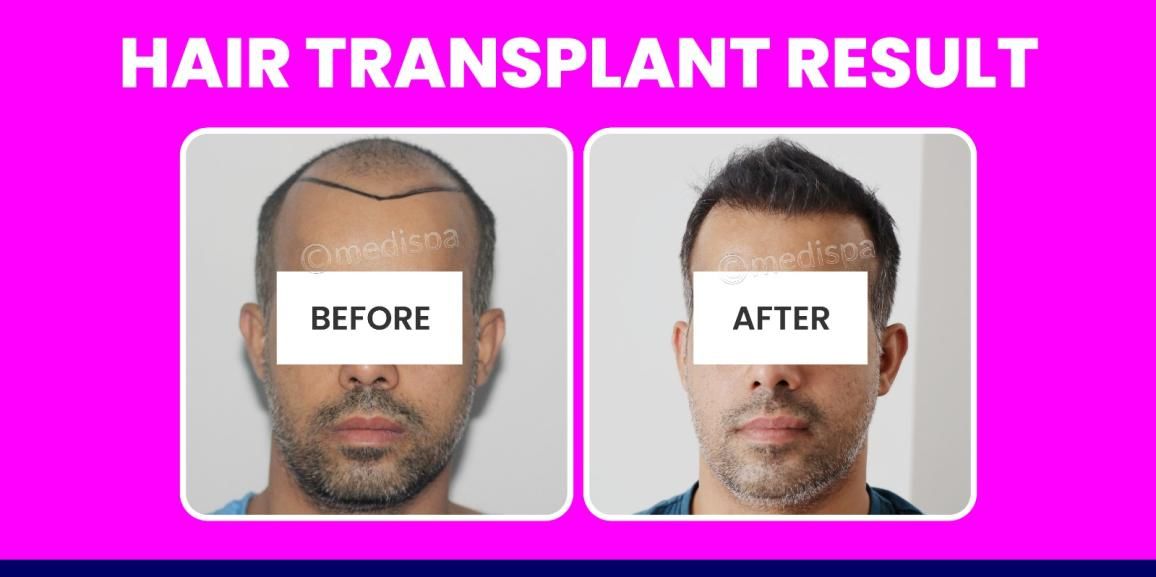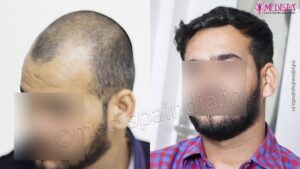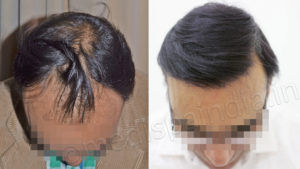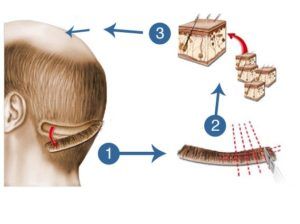
When the hair growth cycle is interrupted and hair loss occurs before new hair can form, baldness will result. Hair growth is a continuous and dynamic process that can be adversely affected in some individuals due to various factors, leading to hair loss.
Cosmetic surgery, once primarily associated with celebrities and the elite, has now gained widespread acceptance among the general populace. The demand for hair transplant in Mumbai has surged due to their increasing popularity. However, those seeking hair transplant services in the city may find that the hair transplant cost in Mumbai at reputable clinics are relatively high.
Delhi and Jaipur have emerged as premier destinations for hair transplant tourism, renowned globally for their exceptional services. These cities are not only celebrated for their outstanding hair transplant facilities but also for their affordability.
A leading choice for hair transplants is the Medispa hair transplant clinic. Our reputation in the field of hair transplantation drives us to pursue excellence and continuously improve with each case we handle. We have established ourselves at the forefront of the industry by consistently enhancing our skills and services.
Dr. Suneet Soni personally oversees all hair transplant procedures, as he believes that true excellence is rooted in expertise and will not compromise on quality. The satisfaction of our clients is our greatest achievement and serves as our motivation. If you aspire to join our ranks of satisfied clients and achieve a successful hair transplant, we invite you to visit the Medispa hair transplant clinic in Delhi or Jaipur.
THE PROCEDURE OF HAIR TRANSPLANT
You may be acquainted with the notion of hair transplantation; however, have you ever contemplated the intricacies involved in its execution? The primary stages of a hair transplant procedure encompass the selection of viable hair follicles, their extraction, and subsequent implantation into the designated bald regions. The extraction of hair follicles is generally conducted through two distinct methodologies, which are elaborated upon below for your comprehension.
- The FUT (Follicular Unit Transplantation) procedure entails the excision of a strip of skin from the posterior and lateral aspects of the scalp. This strip is then segmented, and each follicle is meticulously separated into individual units. The donor site is sutured to promote optimal healing, and the follicles are subsequently implanted in the balding areas to facilitate hair growth.
- Conversely, the FUE (Follicular Unit Extraction) technique involves the individual extraction of hair follicles from the donor site utilizing a specialized punch device that penetrates the skin. These follicles are then transplanted into the bald regions to encourage hair regrowth.
The choice of technique for hair transplantation is contingent upon the specific needs of the individual experiencing hair loss. The FUT method is generally advised for advanced cases of baldness, while the FUE method is more appropriate for the initial stages of hair loss. In a single session, the FUT technique can yield approximately 3000 to 3500 hair follicles, whereas the FUE technique can extract around 2000 to 2500 follicles. To ensure a successful hair transplant, it is imperative to select a surgeon who will judiciously assess the most suitable technique based on the distinct requirements of each patient. Consequently, it is vital to make an informed choice regarding your hair transplant clinic. For further insights into your hair loss pattern and tailored treatment options, consider consulting Medispa clinic.
Is it possible to get high growth rate after hair transplant?
It is indeed feasible to achieve optimal hair growth following a hair transplant procedure. The extent of growth may differ among individuals, influenced by the conditions of both the donor and recipient sites. A thorough evaluation of the donor area is conducted to determine the availability of hair grafts that are suitable for transplantation to the thinning areas. If the donor site is deemed sufficient to provide the necessary number of hair follicles, one can anticipate positive outcomes from the procedure.
The hair density in the balding area after the transplant can be influenced by various factors, including:
- The quantity of hair grafts extracted from the donor sites
- The quality of the hair follicles in the donor region
- The extent of baldness
- The specific technique utilized for the hair transplantation
- The percentage of hair grafts that sustain damage during the procedure
Your hair transplant surgeon will discuss the potential for achieving your desired results, outlining any pertinent terms and conditions that may be applicable.
How to achieve the maximum hair growth by hair transplant?
To optimize your hair growth, it is essential to consider the following aspects:
- Minimizing damage to hair grafts: Prior to undergoing a hair transplant, it is imperative to evaluate the qualifications of the surgeon. Their expertise directly influences the extent of damage to the hair grafts. Given the minute size of hair follicles, skilled hands are necessary to ensure their viability. A lower damage rate of the grafts will lead to a higher survival rate, ultimately maximizing hair growth.
- Selecting the appropriate hair transplant technique: The choice between FUT and FUE techniques should be made based on the individual patient’s requirements and should involve a comprehensive assessment by the surgeon. The selected method plays a crucial role in the survival of the hair grafts and achieving a high-density hair transplant. Generally, FUT is preferred for high-density transplants due to its ability to yield a greater number of hair grafts.
- Post-procedure care: It is vital to provide adequate care for the transplanted hair grafts for at least one week to ensure their survival. Adhering to the surgeon’s instructions is essential for the success of the hair transplant. While the procedure itself does not demand extensive care, it is important to take necessary precautions in the days following the surgery.







